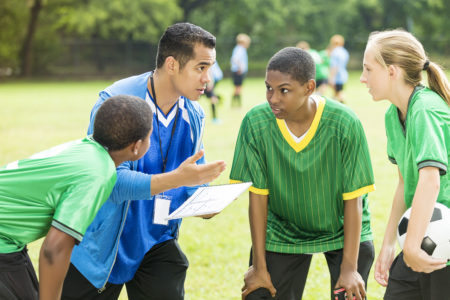Let’s face it. Coaching can be complicated.
As a coach, you’re a mix of coach, parent, educator, and motivator. You see the promise in your athletes, pushing them to achieve things they might not have thought possible. Celebrating their successes and counseling them through short-comings, you develop a close personal relationship with the athletes you train.
You’re also a master of bringing many disciplines to the table when it comes to the development of your teams. There’s the strict physical development required to execute the sport, seeing athletes through physical growth and development of special skills. Psychology is involved, too. There’s considerable mental preparation needed to bring out the best in your team.
And through all of this, how do you balance the requirements of excellent coaching while respecting person-hood and bodily autonomy?
Here are a few ideas for creating a safe, protective environment that puts your athletes boundaries first:
Communicate, communicate, then communicate more:
- Set Expectations. Explain your expectations and style of coaching, not only to your athletes, but to their parents and guardians as well. This should include an explanation of the child protection policies that you adhere to as put forth by your organization or team. Having this open conversation with both athletes and parents ensures that everyone is on the same page and are prepared to hold each other accountable.
- Empower peer-to-peer support. Empower athletes to support one another in regard to safety issues and concerns. For instance, after you explain your style and the ways you will ensure they’re protected, encourage them to speak up if they see another teammate whose boundaries are being violated.
- Match your physical and verbal communication. Understand the nuances of the way you communicate, both verbally and nonverbally. Listen to your tone. Does the tone of your voice match what you are saying? Is your body language convincing? Are you telling an athlete that something is OK, but your body language is rigid or your arms are crossed?
Up your awareness game:
- Be aware of your style. How often do you or your fellow coaches make physical corrections? How do you tend to do it? Is it done in a way that is respectful of the athlete?
- Be aware of the policies of your organization or governing board. Are you aware of the current guidelines? Do you know where to find updates or policy recommendations? If not, we recommend reaching out to other teams to find out how they have been successful in implementing changes.
- Be aware of your team’s culture. Does your team create an atmosphere that allows the athlete to communicate concerns without fear of repercussions? While sport-specific coaching techniques may not be up for discussion, questions from your athletes about personal boundaries should always be allowed and encouraged. Remember, your goal should be to create a protective boundary that puts personal safety first.
Taking coaching to a new level:
- Anticipate needs. Develop a new/expanded awareness of your athletes and their needs. Take notice of new behaviors or emotional reactions, especially where touching or privacy are involved.
- Become trauma sensitive. Trauma impacts people in many ways, sometime affecting behavior at odd times and in unusual ways. There can be actions that trigger emotional responses you’ve never seen before. It’s not unusual for the victim to have a strong response to a trigger and not be aware of the cause. They know something upset them but they can’t put their finger on exactly where it came from. Be there for your athletes and listen to both the spoken and unspoken.
- Have a plan to speak up. Be ready to address your concerns with the athlete, parent, and club management. Know and follow your policies and consistently encourage others to do the same.
All that’s required to put any of the above in place is a willingness to make changes, to be informed and aware, and to respond concerns. When you commit to creating a safe, protective environment for your athletes, you create a place where they can grow and excel. Share this article and talk to other coaches and coaching assistants, asking them to be open and consider the tips above as well.
Did you know?
Darkness to Light offers Healthy Touch for Children and Youth, a 30-minute training that can be helpful for coaches. The training covers guidelines for healthy touch and safe and respectful ways to interact with children. Find out more.
Follow us on social media to stay up to date and join the conversation.


